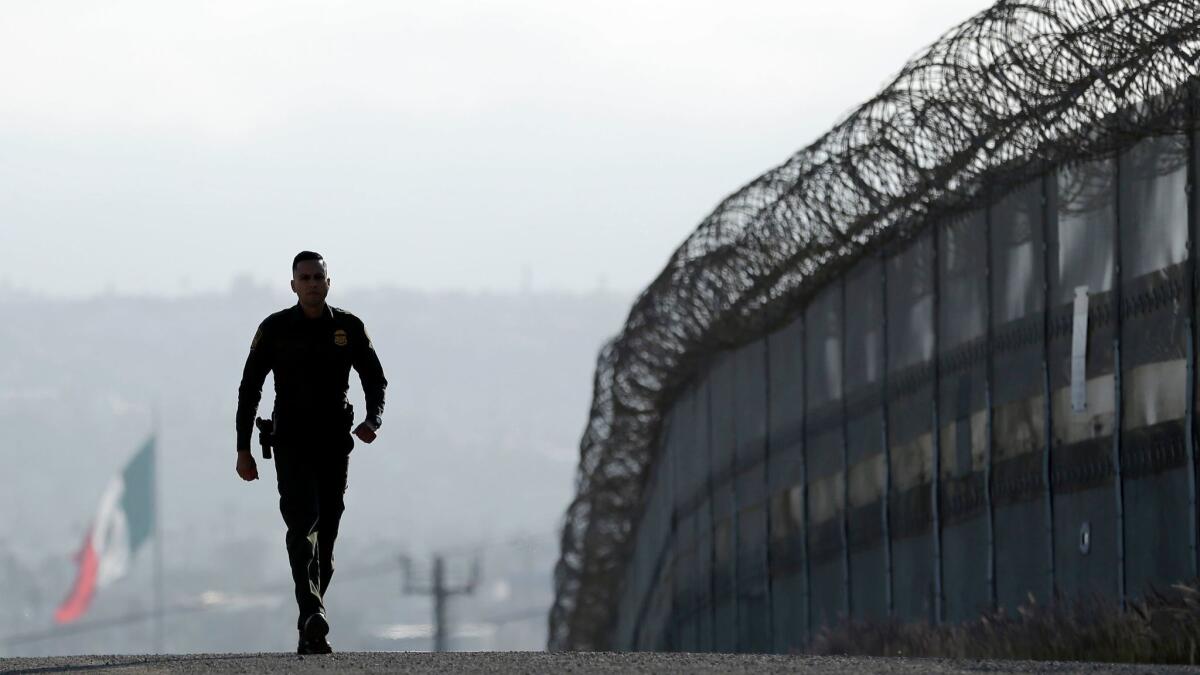Editorial: Trump is setting the stage for mass deportations. If Congress has sense it will fix our immigration system instead

The Trump administration is about to learn the difference between rhetoric and reality, and could be setting itself up for a spectacular policy failure. SAD!
Earlier this week, Homeland Security Secretary John F. Kelly released his new guidance for immigration enforcement, effectively dismantling years of federal policy and sending a shiver of fear through millions of people living in the U.S. without permission. Even before Kelley’s official directives came out, undocumented immigrants had begun moving into the shadows, thanks to President Trump’s mean-spirited and misguided campaign threats and executive orders. Some families were apparently keeping children out of school to avoid encountering immigration agents. Now that process will surely continue.
White House officials tried to argue that there was nothing to panic about in the policies released this week because the administration has no plan for imminent mass deportations or detentions. That’s disingenuous, though. The directives are a blueprint for both; all Homeland Security lacks are the staffing and infrastructure to carry them out. The new rules narrowed the pool of immigrants protected (by the Obama administration) from deportation so that now, nearly everyone living in the country illegally is at risk unless they qualify for the Deferred Action for Childhood Arrivals program. The directives also say anyone deemed inadmissible at the border must be detained during deportation proceedings.
It’s simply not believable that the government is going to round up and deport even a majority of the people living in the U.S. without permission.
Actually ramping up apprehensions and deportations will take more government workers, more detention cells and a bigger immigration court system, as well as cooperation from local law-enforcement officials — many of whom balk at the idea — and the backing of a spending-averse Congress. Trump wants to hire 5,000 more border agents and 10,000 more ICE agents for enforcement in the interior of the country, and he expects to vastly increase the number of detainees from the current 41,000 people. The detention system — particularly the part run under contract by private prison companies — has been condemned by human rights groups over living conditions, detainees’ access to lawyers and lack of adequate healthcare.
Even before Trump’s proposed enforcement surge, agents apprehended 415,816 people at the border last year; the immigration courts have 542,000 pending cases. And that represents just a tiny fraction of the 11 million undocumented immigrants in the country. Surely they can’t all be detained; even the entire federal prison system only holds 189,130 inmates. Trump might want to consider appointing a Secretary of Reality Check.
Adding bodies to the border patrol carries its own risks. The number of agents nearly doubled from 2002 to 2009 and, according to former Customs and Border Patrol internal affairs chief James Tomsheck, new hires were not fully vetted, leading to problems with corruption (some new hires actually turned out to be moles working for the cartels). Independent reports found an internal Border Patrol culture that downplayed corruption and the use of excessive force. Conditions had been improving over the past year or so, and the Obama administration in October hired Mark Morgan, a former assistant director of the FBI, as the first Border Patrol director to come form outside the organization. But Morgan, unpopular with the border agents’ union (which had strongly endorsed Trump), was fired in January, raising doubts about whether the reforms will continue as the department seeks to increase staffing by 25%.
It’s simply not believable that the government is going to round up and deport even a majority of the people living in the U.S. without permission — many of whom who are guilty of nothing more than violating the civil immigration laws. And beyond the inherent coldheartedness of uprooting and, in many cases, dividing families that have spent decades in this country, it’s manifestly bad policy. The center-right American Action Forum has estimated that deporting all undocumented immigrants would cost the government between $400 billion and $600 billion, shave $1 trillion from GDP, cause labor shortages and damage families — including the 4.5 million American citizens under age 18 with at least one parent living in the country illegally. Even a “lite” version of Trump’s deportation policy would deliver unjustifiable agony to an unacceptably large number of people.
If the Republicans in Congress had any sense, they’d refuse to allocate money to pay for Trump’s counterproductive proposals and instead insist the administration work with them on the only rational solution to this problem: A humane and comprehensive overhaul of the system that would create a path to citizenship for people who already have roots in the country while also setting reasonable immigration quotas and allowing the U.S. to regain control over its border. Otherwise, Congress will become complicit in Trump’s odious, ill-conceived plan.
Follow the Opinion section on Twitter @latimesopinion or Facebook
More to Read
A cure for the common opinion
Get thought-provoking perspectives with our weekly newsletter.
You may occasionally receive promotional content from the Los Angeles Times.






